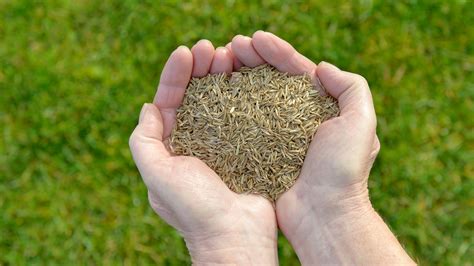How to Plant Grass Seed: A Comprehensive Guide for a Lush Lawn
Want a vibrant, healthy lawn? Planting grass seed is a rewarding process that can transform your yard. This comprehensive guide provides a step-by-step approach to ensure success, from preparation to maintenance. Let's get started on growing the lawn of your dreams!
1. Preparing Your Soil: The Foundation for Success
A strong foundation is key to a thriving lawn. Before you even think about scattering seed, you need to prepare your soil. This crucial step ensures proper seed-to-soil contact and optimal germination.
1.1 Testing Your Soil: Understanding Your Ground
Before you begin, it's beneficial to perform a soil test. This will reveal the pH level and nutrient content of your soil. Knowing this information helps you amend the soil appropriately, creating the perfect environment for grass seed to flourish. You can purchase soil testing kits online or at most garden centers.
1.2 Clearing the Area: Removing Debris and Existing Growth
Remove any existing grass, weeds, rocks, and debris from the area you plan to seed. This ensures that your new grass seed has the best chance to germinate without competition. Use a rake or sod cutter to achieve a clean, even surface.
1.3 Aerating the Soil: Improving Drainage and Root Growth
Aerating the soil is crucial for proper drainage and root penetration. This allows water and nutrients to reach the roots more easily, leading to healthier grass. You can aerate using a garden fork, a core aerator, or even spiked shoes.
1.4 Leveling the Ground: Creating an Even Surface
For a uniform lawn, ensure the ground is relatively level. Fill any low spots with topsoil and rake the area to create a smooth, even surface. This will promote even seed distribution and germination.
2. Choosing the Right Grass Seed: Selecting the Perfect Variety
Selecting the right grass seed is paramount. Consider your climate, sunlight exposure, and soil type when making your choice. Different grasses thrive under different conditions. Consult with your local garden center for recommendations based on your specific needs.
2.1 Understanding Grass Types: Cool-Season vs. Warm-Season
- Cool-Season Grasses: Thrive in cooler temperatures and are ideal for northern climates. Examples include Kentucky bluegrass, fescue, and ryegrass.
- Warm-Season Grasses: Prefer warm temperatures and are better suited for southern climates. Examples include Bermuda grass, zoysia grass, and St. Augustine grass.
3. Sowing the Seed: Spreading for Success
Now comes the exciting part – sowing your grass seed! Even distribution is crucial for a uniform lawn.
3.1 Broadcasting vs. Drilling: Choosing Your Method
- Broadcasting: This method involves scattering the seed evenly across the area. It's suitable for smaller areas and provides a natural look.
- Drilling: This involves using a seed drill to plant the seeds at a specific depth and spacing. This is ideal for larger areas and offers more precise control.
3.2 Applying the Seed: Achieving Even Distribution
Whether broadcasting or drilling, ensure you distribute the seed evenly across the area. Follow the recommended seeding rate on the seed package for optimal results.
4. Watering and Maintenance: Nurturing Your New Lawn
Consistent watering and proper maintenance are crucial for the successful establishment of your new lawn.
4.1 Watering Regularly: Keeping the Soil Moist
Keep the soil consistently moist but not soggy. Water lightly and frequently, especially during the germination period. Avoid overwatering, which can lead to fungal diseases.
4.2 Fertilizing and Weed Control: Promoting Healthy Growth
Fertilize your new lawn according to the instructions on the fertilizer package. This will help promote healthy growth and a lush green color. Address any weeds promptly to prevent competition for resources.
5. Patience and Persistence: The Key to a Great Lawn
Remember, establishing a new lawn takes time and patience. Don't get discouraged if you don't see immediate results. With consistent care and attention, you'll soon be enjoying the beauty of your own lush, healthy lawn.
By following these steps, you'll be well on your way to achieving the lawn of your dreams. Remember to adjust techniques based on your specific environment and chosen grass type. Happy gardening!
